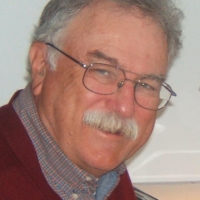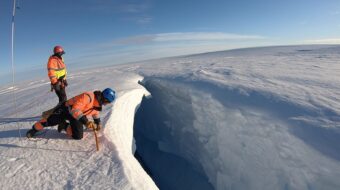PORT ANGELES, Wash. – A loud gasp broke the inky darkness and someone cried, “Wow! Look at that one!” The crowd was reacting to an especially large, dazzling, meteor flashing across the starry sky above the Olympic Mountains.
It was after midnight, the morning of August 13, and we were among the 100 or more stargazers who had driven 17 miles of winding road to the Hurricane Ridge Lodge, one mile above sea level, to observe the Perseid Meteor Shower.
John Goar, an 8th grade science teacher at Kingston Middle School in Kingston, Wash., drew the crowd to this mountaintop observatory. Goar, founder of a group called “Telescopes for Science Teachers,” taught a three-night astronomy seminar using the lodge as his classroom. It ended with the Perseid Shower, which reaches its peak each year between August 9 and 14.
During the peak of the shower, 60 or meteors zip across the sky. Observed for more than 2,000 years, the shower is named for a cloud of dust and debris from the Swift-Tuttle comet that Earth swings through each summer. The meteors burn up in a spectacular fireworks display as they fall through the Earth’s atmosphere.
Goar’s class had occupied part of the lodge’s parking lot, provided free of charge by the Olympic National Park, to set up handmade reflective telescopes, with big cylindrical cardboard barrels, hand-ground reflective mirrors, and swivel-mounts so they can be pointed at any celestial wonder.
One of Goar’s students, Amy, a middle-school teacher in Tacoma, was navigating outer space as expertly as Captain Kirk of “Star Trek.” She glanced through the sighting-telescope and swung the barrel to point at a spiral nebula. “I am so amazed I can do this after only three days of classes,” she told us. “There!” she said with triumph. “Take a look.” Sure enough, we looked through the eyepiece and there was a ghostly star cluster spinning many light years away.
Goar told this reporter he chose Hurricane Ridge because the night sky over the mountain range is exceptionally dark and the stars shine so brightly. Light pollution makes it almost impossible to observe heavenly bodies in the skies above Seattle or other large cities, he said.
“I belong to the Dark Sky Advocate Club, a group that works to reduce light pollution,” he said. The grassroots organization argues that “light pollution and light trespass are two subtle but pervasive problems that degrade our quality of life and destroy our enjoyment of the night skies.”
Goar pointed a 20-inch telescope, largest of the array, at Jupiter. A line formed and people gazed in wonder at the huge planet and its four satellites, Io, Europa, Ganymede and Callisto, clearly visible through the lens. “Galileo pointed his telescope at Jupiter 400 years ago, 1610, and saw those moons for the first time,” Goar told the crowd. “He kept a written record of what he saw over many nights, observing the satellites movements around Jupiter. It got him in a lot of trouble.”
He was referring to the heresy charges Galileo faced from the Roman Catholic hierarchy. Ultimately, Galileo’s observations shattered church dogma that the Earth is the center of the universe.
We enjoyed the show so much, we drove up the next night for an encore performance, this time joined by many members of my immediate and extended family. It was an unusually warm, still night, the stars glittering against the jet-black sky.
Jim Sykes, one of Goar’s assistants and a retired engineer from Poulsbo, Wash., told me he has been an amateur astronomer for more than 50 years. When he retired, he completed his handsome telescope, which he calls “Phoenix.” Like most of the handmade instruments, his is a Newtonian reflective telescope, named for Sir Isaac Newton who invented it. “The mirror in my telescope was ground by hand by a high school student,” he said.
He pointed the 12.5-inch telescope at the crescent Moon. It magnified the lunar surface so large that the craters were clearly visible. “That largest crater is ‘Sea of Crises.'” Sykes said. Then he pointed the scope at a bright pinpoint hanging low on the western horizon. It was Saturn, its rings tilted at a rakish 45-degree angle.
My 12 year-old friend Damion Fox, from Florence, Ore., stepped up to the telescope. He held my digital camera against the eyepiece of the telescope. The image of Saturn filled the screen and he clicked the shot. Over the next three hours, Fox shot many more digital images of the moon, Saturn, Venus and Jupiter, many of them now posted on Facebook. Unfortunately, the camera was not fast enough to catch an image of a meteor blazing across the sky. We had only our naked eyes to see that heavenly wonder.
Photo: A photo of the Moon via Jim Sykes’ telescope, taken by Damion Fox, 12 years old.










